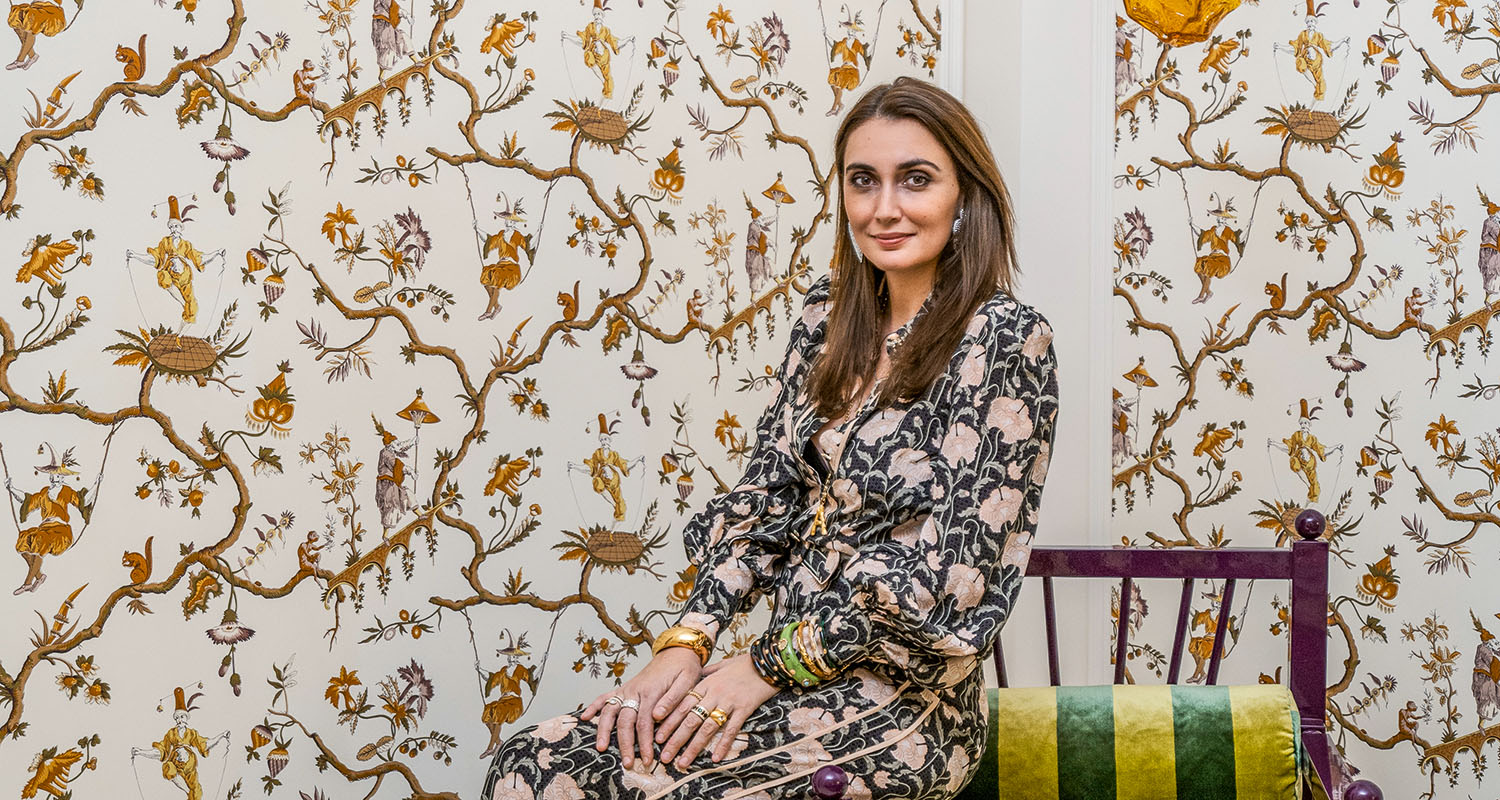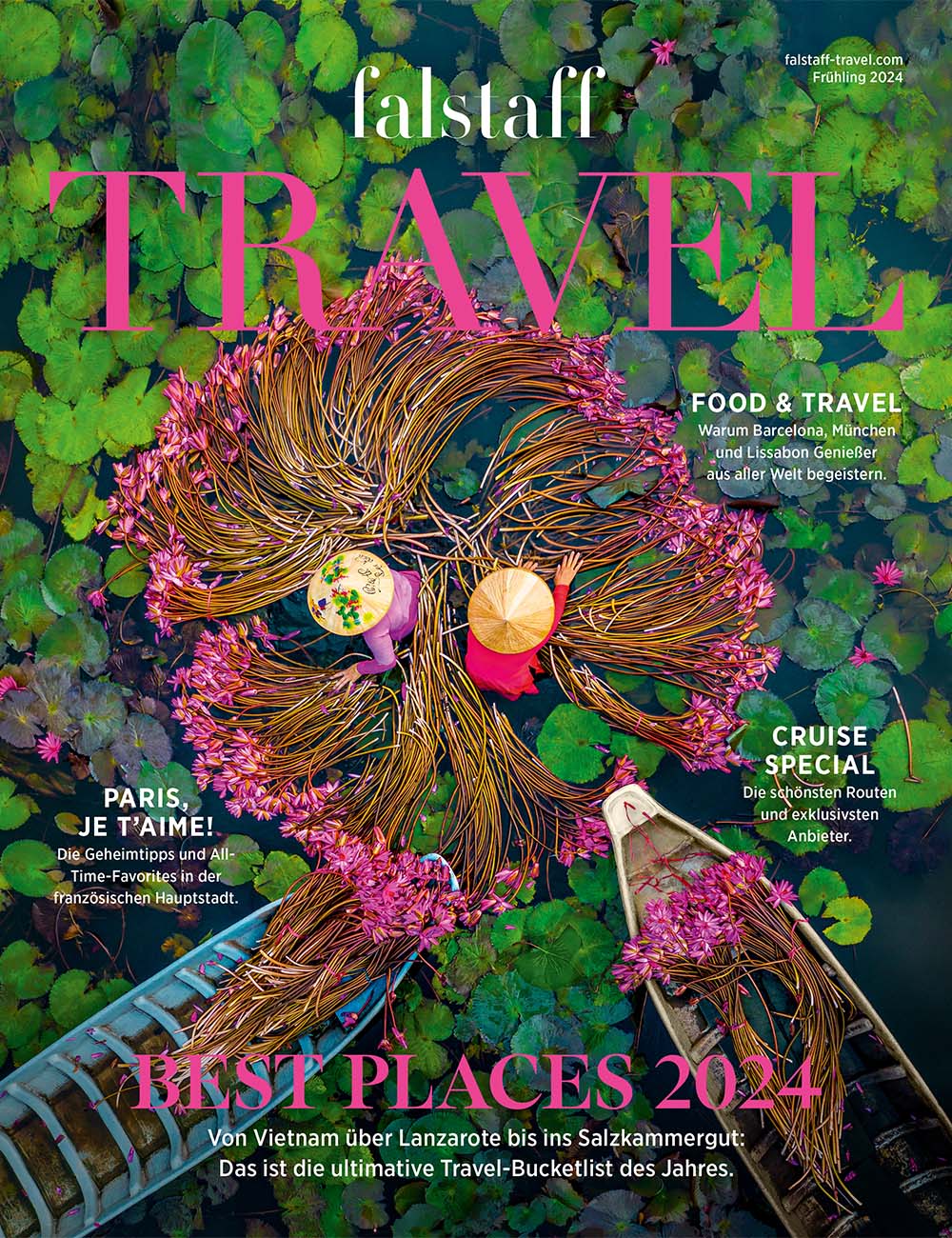
Laura Gonzalez: Mix and Match
The work of architect and designer Laura Gonzalez is shaped by her passion for patterns, materials and bold combinations. The upbeat elegance of her interiors embodies the very essence of the new era of maximalism.
17 May 2024
© provided
Blending vibrant colors, luxurious materials and sumptuous patterns into a harmonious whole that doesn’t just lift the spirits but radiates elegance too is an art form – and Laura Gonzalez’s trademark. With her eclectic, maximalist signature, she has shaped the character of numerous Cartier boutiques in cities such as Doha, Paris and New York, other stores in Tokyo and Hawaii and various restaurants and hotels, proving that her aesthetic language is universally loved and understood.
A Farewell to minimalism
You could say the Parisian architect and designer inherited her unmistakable style. “The furnishings in every single room of my parents’ house were vivid and maximalist,” she says. “More than anything else, North African influences played the leading role because my father is from Algeria.” Besides striking combinations of patterns, her version of maximalism incorporates different cultural influences as well. She developed her interest in art and aesthetics during childhood: “My parents loved art and auctions, and they took me along wherever they went,” recalls Gonzalez. That’s probably also why, even at an early age, she knew she wanted to take up a creative profession. “Because I’m very organized, I opted for architecture: it combines both facets of my personality – the artistic and the structured side,” explains the designer.
Scott Frances
After studying in Paris, Venice and China, Gonzalez designed a Parisian club by the name of Le Bus Palladium. The project showed her that bars, restaurants and hotels offer more creative scope than apartment buildings. Ever since, the architecture firm she founded in 2008 at the age of just 24 has focused on places that provide settings for the indulgent side of life. Today, Gonzalez also takes on residential projects, especially vacation homes, and designs furniture collections. For her, maximalism is a mission. “Especially in stressful times like these, I think we need joyful and colorful interiors that transport us to a different place mentally and let us dream.”
© Philippe Garcia
If you’re not planning to shop at Cartier any time soon – Gonzalez has meanwhile become the brand’s architect of choice – you can experience her style at the Saint James hotel in Paris’s elegant 16th arrondissement, or the Lebanese restaurant Noura in the same district. Although they are very different, both projects stand out for the opulence of their interiors. For the new Saint James, Gonzalez envisioned the atmosphere of a sophisticated urban villa, whereas the redesigned Noura was decorated to reflect the warmth and vitality of Lebanon.
Outstanding craftsmanship
© Philippe Garcia
For the Saint James, Gonzalez started by revealing the historic building’s past and had the vaulted arches and domed ceiling in the lobby restored. For the 50 rooms and public areas, she created vibrant interiors with gorgeous colors and playful details. Handmade fabrics, wall coverings and rugs, vases in ceramic and porcelain and sumptuous wallpapers testify to the excellence of French craftsmanship. Some rooms are dominated by a warm palette of earthy and fall shades, others are light and sunny.
In the hotel’s Bellefeuille restaurant, which has floor-to-ceiling windows, green plants and delicate floral wallpapers that evoke a Victorian conservatory, a chandelier discovered in an antique shop adds the finishing touch to the upholstered chairs and thick carpet. And if you think the restaurant is inviting, you’ll never want to leave the wood-paneled bar once you see it: its leather-covered counter, heavy armchairs and thick cushions radiate the ambience of a dignified country estate – reinforced by shelves lined with thousands of books from the building’s previous life.
Inspired by old Beirut
Matthieu Salvaing
A similar magnetism pervades Noura, which first opened in 1989 and which Gonzalez has now transformed with a captivating palette that ranges from sunny yellow to mint green. Featuring an open kitchen and cocktail bar, the restaurant owes its authentic ambience to colorful tiles combined with Moorish arches and cornices. “I felt it was important for the enjoyment and joie de vivre that this Paris institution stands for to pervade the atmosphere and setting as well,” she explains. She took her inspiration from photos of cafés in old Beirut; elements such as the pine-tree mural that she commissioned from a Beirut artists’ studio turn the restaurant into a location that warms heart and soul to the max.

This article appeared in the Falstaff TRAVEL issue Spring 2024.






